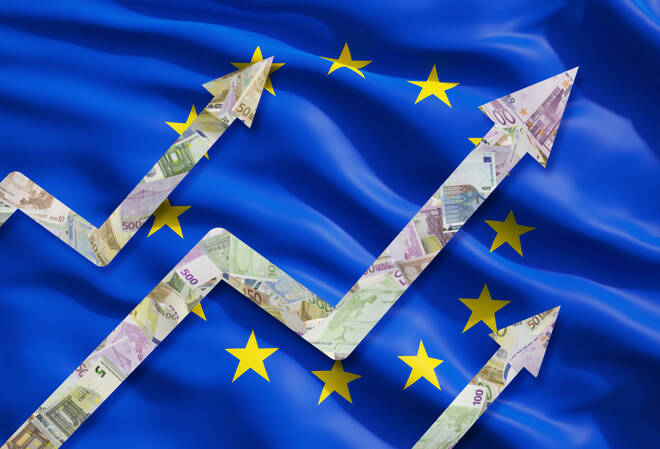Advertisement
Advertisement
European Equities: COVID-19 News Drives the Futures as Investors Brush Aside Grim Data out of China
By:
Futures point to a breakout at the open. Even dire economic data out of China seems unable to spook the markets...
Eurozone CPI (YoY) (Mar) Final
The Majors
It was a mixed day for the European majors on Thursday. The EuroStoxx600 and DAX30 rose by 0.58% and 0.21% respectively, while the CAC40 fell by 0.08%.
Market reaction to talks of governments making early moves to reopen economies provided support on the day.
The upside came in spite of the IMF’s economic forecasts and quite dire economic data from the U.S on Thursday.
For the CAC40, a spike in the number of new coronavirus cases contributed to the trend-bucking loss on the day.
The Stats
It was a relatively quiet day on the Eurozone economic calendar on Thursday. Finalized March inflation figures for Germany and February industrial production figures from the Eurozone were in focus.
According to Destatis, consumer prices increased by 0.1% in March, which was in line with prelim figures. In February, consumer prices had risen by 0.4%.
For the Eurozone, industrial production fell by 0.1%, following a 2.3% increase in January. Economists had forecast a 0.2% decline.
According to Eurostat,
- The production of durable consumer goods slid by 2.0%, with the production of capital goods falling by 1.5%.
- Offsetting the decline were increases in the production of intermediate goods and non-durable consumer goods, both rising by 0.4%. Energy production also provided support, with a 0.7% increase.
- By member state, Greece (-3.7%), Portugal (-2.8%), and Malta (-2.6%) reported the largest declines in production. Estonia (+8.7%) and Latvia (+3.1%) reported the largest increases in February.
- Year-on-year, industrial production was down by 1.9%.
From the U.S, the weekly initial jobless claims jumped by 5.245m, with the Philly FED Manufacturing Index sliding from -12.7 to -56.6 in April.
The weak numbers pinned back the majors, but not enough to leave the DAX30 and EuroStoxx600 in the red.
The Market Movers
For the DAX: The auto sector found support following Wednesday’s sell-off. BMW and Continental rose by 1.44% and by 0.98% respectively to lead the way. Daimler and Volkswagen weren’t far behind, with gains of 0.60% and 0.34% respectively.
It was a mixed day for the banks, however. Commerzbank fell by 1.68%, while Deutsche Bank eked out a 0.26% gain on the day.
Deutsche Lufthansa continued to see red, falling by 1.65% off the back of a 5.65% slide on Wednesday.
From the CAC, it was another bearish for the banks. BNP Paribas slid by 3.56%, with Credit Agricole and Soc Gen falling by 0.61% and 0.30% respectively.
The auto sector saw heavy losses, with Peugeot and Renault sliding by 3.87% and 3.50% respectively.
Air France-KLM (-1.40%) and Airbus SE (-2.92%) also saw more red following Wednesday’s pullback.
On the VIX Index
The VIX resumed its downward trend on Thursday, with a 1.79% decline delivering the 5th day in the red out of 6. Partially reversing an 8.16% gain from Wednesday, the VIX ended the day at 40.1.
Chatter from the U.S of a phased plan to ease lockdown measures provided support to the U.S equity markets on Thursday.
The S&P500 rose by 0.58%, with the Dow and NASDAQ gaining 0.14% and 1.66% respectively.
While hopes of an opening of the U.S economy was positive for the equity markets, economic data did limit the downside for the VIX.
The Day Ahead
It’s a relatively quiet day ahead on the Eurozone economic calendar. Finalized March inflation figures are due out of the Eurozone.
The numbers are unlikely to have a material impact on the European majors, leaving updates on the coronavirus in focus.
On Thursday, the total number of coronavirus cases across France, Germany, Italy, and Spain rose by 26,027 to 656,614. On Wednesday, there had been a rise of 18,526 to 630,587.
In the U.S, the total number of cases increased by 31,292 to 675,640, taking the total number of cases to 2,178,149. On Wednesday, the U.S had reported 30,462 new cases.
Coupled with updates on today’s figures, the markets will also be looking for more details on plans to ease lockdown measures.
Overnight, news of a new COVID-19 treatment drug showing signs of being able to combat the virus delivered strong support ahead of the European session.
Economic data out of China was less supportive, however, with 1st quarter GDP and March industrial production figures in focus.
In the 1st quarter, the economy contracted by 9.8%, quarter-on-quarter, following 1.5% growth in the 4th quarter. Economists had forecast a contraction of 9.9%.
Year-on-year, the economy contracted by 6.8%, following 6.0% growth in the 4th quarter. Economists had forecast a contraction of 6.5%.
In March, industrial production fell by 1.1%, year-on-year, which was better than a forecasted 7.3% slide. In February, industrial production had slumped by 13.5%.
Year-on-year, retail sales saw a further decline in March, with sales tumbling by 15.8%. In February, retail sales had fallen by 20.5%. Economists had forecast a 10% slide.
In the futures markets, at the time of writing, the DAX was up by 268.5 points, with the Dow up by 833 points.
About the Author
Bob Masonauthor
With over 28 years of experience in the financial industry, Bob has worked with various global rating agencies and multinational banks. Currently he is covering currencies, commodities, alternative asset classes and global equities, focusing mostly on European and Asian markets.
Advertisement
